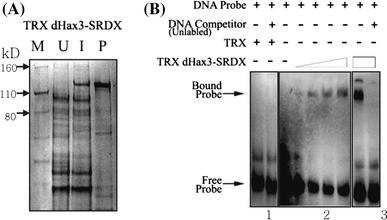
Thus, it seems likely that plant viruses also encode the ability to suppress additional host responses. However, the diversity of defense responses induced during virus infections suggests that numerous additional host defense pathways are activated during systemic infections ( 71). Therefore, the suppression of the RNAi defense pathway represents an important, if not essential, anti-defense mechanism. The deletion or mutation of a virus's suppressor protein typically compromises virus replication and inhibits infection. To overcome this defense mechanism, viruses encode suppressor proteins that disrupt specific steps in the RNAi pathway ( 17, 18). Perhaps the best-studied example of plant virus-mediated defense suppression involves the host recognition of virus-associated RNAs and the subsequent induction of RNA interference (RNAi) defense pathways. The ability of viruses to establish a systemic infection even during host defense activation suggests that viruses possess mechanisms that suppress the efficacy of these defenses. This finding implies that plants are adept at recognizing and responding to virus-derived molecular patterns. In addition, transcriptional microarray studies investigating host responses to different plant viruses have established that up to one-third of the host genes induced during susceptible infections are defense related ( 28, 38, 71). The dependent nature of viral pathogens on their hosts dictates that their entire genomes potentially function as PAMPs in the induction of host defenses. Thus, the identification of pathogen-targeted regulatory mechanisms represents an important aspect in understanding pathogenesis and the development of disease. The evidence from these and related studies indicates that pathogens target key cellular pathways to suppress a correlated array of host defenses. For example, Pseudomonas syringae secretes effector proteins HopM1 and HopT1-1 to disrupt vesicle trafficking as a means to suppress extracellular cell wall-associated defenses and to suppress cellular microRNA defense pathways, respectively ( 52, 53). This includes targeting the regulatory mechanisms that mediate PAMP-induced responses ( 66). To be successful, pathogens have evolved numerous mechanisms to suppress these PAMP-induced defense responses. PAMP recognition involves the production of reactive oxygen species, increases in cell wall structural components, and the generation of numerous defense proteins and metabolites that function as a first line of defense against the establishment of infection ( 5, 33, 69). Plants have evolved to recognize these molecular components and respond with the induction of diverse defense mechanisms ( 33, 41). Examples of PAMPs include the bacterial elongation factor EF-TU, flagellin, and fungal chitin ( 26, 43, 49). When associated with plants, pathogens/microbes generally produce sets of molecular components termed pathogen/microbe-associated molecular patterns (PAMPs/MAMPs) ( 2, 41, 46). The suppression of host defenses by invading pathogens represents a key step in the establishment of a successful infection. Taken together, these findings suggest that the replicase-ATAF2 interaction suppresses basal host defenses as a means to promote systemic virus accumulation. Similarly, noninfected ATAF2 knockout or ATAF2 repressor lines display reduced levels of PR1 transcripts when treated with salicylic acid. However, the salicylic acid treatment of systemically infected tissues did not produce a similar increase in either ATAF2 or PR1 transcripts, suggesting that host defense responses are attenuated during systemic virus invasion. ATAF2 and PR1 transcript levels also increase in response to salicylic acid treatment. In response to TMV infections, ATAF2 and PR1 display increased transcript accumulations in inoculated tissues but not in systemically infected tissues.

Thus, ATAF2 appears to function in the regulation of host basal defense responses. In contrast, these marker genes have reduced transcript levels in ATAF2 knockout or repressor plant lines. The transcriptional activity of known defense-associated marker genes PR1, PR2, and PDF1.2 significantly increase within transgenic plants overexpressing ATAF2. Proteasome inhibition studies suggest that ATAF2 is targeted for degradation during virus infection. ATAF2 is transcriptionally induced in response to TMV infection, and its overexpression significantly reduces virus accumulation. An interaction between the helicase domain of the Tobacco mosaic virus (TMV) 126-/183-kDa replicase protein(s) and the Arabidopsis thaliana NAC domain transcription factor ATAF2 was identified via yeast two-hybrid and in planta immunoprecipitation assays.


 0 kommentar(er)
0 kommentar(er)
